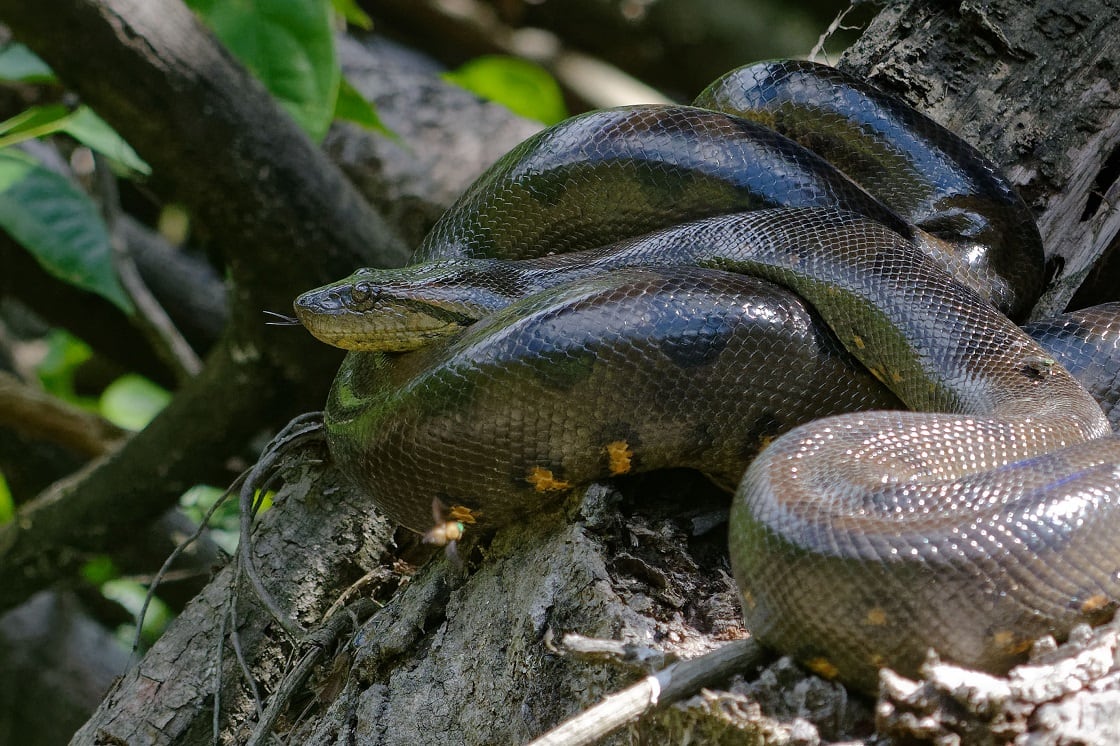How Fast Can an Anaconda Move? Unveiling the Speed of the Giant Snake
The mesmerizing world of wildlife is filled with creatures that showcase incredible abilities and behaviors. Among these, the anaconda stands out as a giant snake with a mysterious allure. One of the intriguing questions that often captures the imagination of enthusiasts is, "How fast can an anaconda move?" In this comprehensive exploration, we delve into the fascinating mechanics of anaconda movement, factors influencing their speed, and comparisons with other creatures. Join us as we unveil the secrets behind the anaconda's locomotion.
1. Anaconda Locomotion: The Basics

Anaconda Locomotion: The Basics
Anacondas are renowned for their immense size and powerful physique. These giant serpents primarily reside in the dense rainforests of South America. To understand their speed, it's important to grasp the fundamentals of anaconda locomotion. Unlike land mammals, anacondas lack limbs, relying solely on their bodies to propel themselves. Their unique mode of movement involves a combination of lateral undulation and rectilinear motion.
Lateral Undulation: This is the most common mode of anaconda movement. The snake propels itself forward by creating a series of lateral bends that move down the length of its body, resulting in a wave-like motion. This undulation efficiently propels the snake across various terrains.
Rectilinear Motion: When stealth is required, anacondas employ rectilinear motion. In this method, the snake keeps its body straight and uses its belly scales to push against the ground. While slower than undulation, this method allows for silent and inconspicuous movement.
2. Factors Influencing Anaconda Speed

Factors Influencing Anaconda Speed
The speed at which an anaconda can move is influenced by several intrinsic and extrinsic factors. These factors play a crucial role in determining the snake's ability to maneuver and cover ground.
Size and Age: Larger anacondas tend to move more slowly due to their increased bulk. Younger, smaller anacondas may exhibit greater agility and speed.
Environmental Conditions: The terrain and environmental conditions impact anaconda speed. Movement through water is generally faster than on land, as water reduces friction.
Temperature: Anacondas are ectothermic, meaning their body temperature depends on the environment. Warmer temperatures can lead to increased metabolic rates and potentially greater speed.
Hunting vs. Conservation: When hunting, anacondas can move swiftly to catch prey. However, in conservation mode, they conserve energy and move more slowly.
3. Comparisons with Other Creatures
To grasp the anaconda's speed in perspective, let's compare it to some other animals:
| Creature | Top Speed | Anaconda's Speed |
| Cheetah (Land) | ~75 mph (120 km/h) | Slower |
| Human | ~27.8 mph (44.72 km/h) | Comparable |
| Alligator (Water) | ~20 mph (32 km/h) | Faster |
| Anaconda | Varies (up to ~10 mph) | -- |
The question "How fast can an anaconda move?" leads us into a captivating realm of snake locomotion. Anacondas, despite their massive size, exhibit unique methods of movement that allow them to thrive in their habitats. Factors such as size, environment, and temperature intricately influence their speed. While not the fastest creatures on land or in water, anacondas have adapted their locomotion techniques to suit their needs. The mystery surrounding these giant snakes only deepens as we continue to explore their remarkable capabilities.